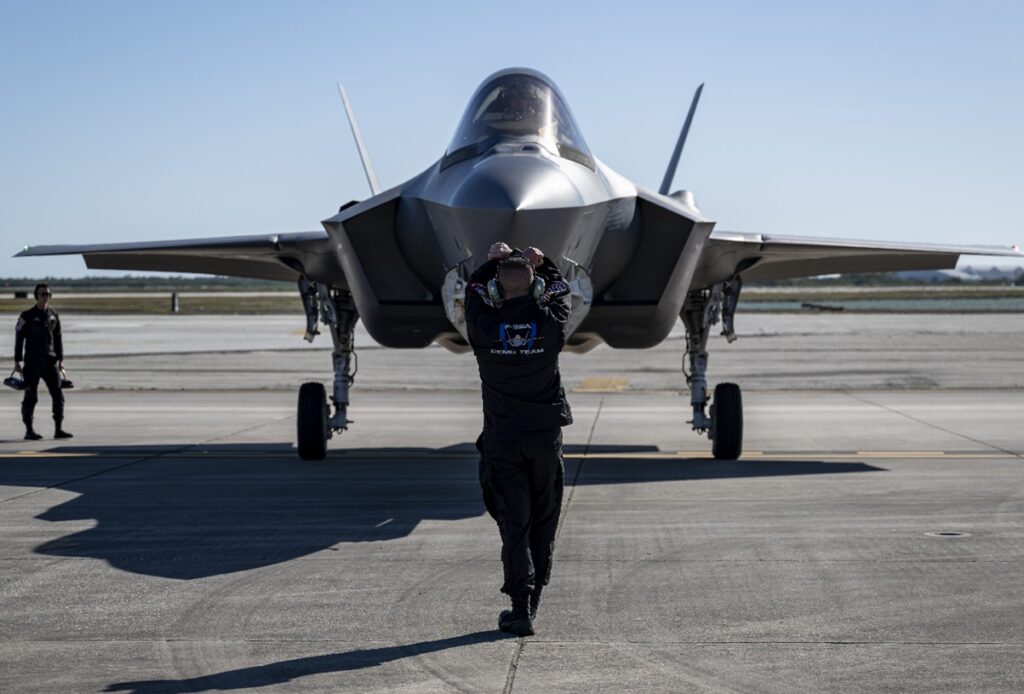America’s most controversial warplane, the F-35 Lightning II, is back in the spotlight as several allies reevaluate their purchases amid shifting politics and budgetary pressures.
A Newsweek map shows which nations are operating or have placed orders for the fifth-generation stealth jet.
Who Has the F-35
The United States remains the program’s anchor customer, with over 600 aircraft across three variants: the Air Force’s F-35A, the Marine Corps’ short takeoff and vertical landing F-35B and the F-35Cs kept onboard Navy aircraft carriers.
Among U.S. allies, Japan is set to become the second-largest operator, with 147 jets, including 42 F-35Bs expected to deploy aboard its modified Izumo-class helicopter destroyers—effectively transforming them into aircraft carriers. The move is part of Tokyo’s broader defense buildup to counter China’s regional ambitions.
South Korea is expanding its current fleet of 40 F-35As to 60, while Australia has already taken delivery of all 72 jets it ordered.
Israel remains the only Middle Eastern operator, while NATO members like the U.K., Italy, the Netherlands, Denmark and Norway have received units and await additional deliveries. Other NATO countries, including Germany and Belgium, have also placed orders.
A Fraught Legacy
The F-35 program has been plagued by delays, technical setbacks and ballooning costs since its inception. Developed over nearly two decades, its projected lifetime cost now exceeds $2 trillion, more than double the entire U.S. defense budget for 2024, according to an April 2024 report by the U.S. Government Accountability Office.
Despite reliability concerns and Pentagon efforts to stretch airframe mileage, the U.S. still plans to operate roughly 2,500 jets through the 2080s.
Some air forces are exploring alternatives. The upgraded General Dynamics F-16V Block 70/72, though less advanced, offers a more affordable and proven alternative for countries prioritizing cost-effectiveness over stealth.
Doubts From Partners
Price, however, isn’t the only factor giving some foreign capitals pause.
Portugal has expressed hesitation about moving forward with its own F-35 acquisition plans, with outgoing defense chief Nuno Melo seeming to reference a shift in U.S. policy under President Donald Trump.
“We cannot ignore the geopolitical environment in our choices. The recent position of the United States, in the context of NATO […] must make us think about the best options, because the predictability of our allies is a greater asset to take into account,” he told local media last month.
In Canada, those concerns have led to a full review. Prime Minister Mark Carney said that his country is looking at alternatives to its $13.3 billion deal for 88 F-35s signed in 2023.
“It is clear our security relationship is too focused on the United States. We must diversify,” Carney said last month, per Reuters.
Canada’s Department of National Defence told Newsweek that the program is not canceled and remains in early review stages. Ottawa “continues to review all procurement approaches to align with the best interests of Canadians and the Canadian Armed Forces,” the spokesperson said.
Program Origins and Outlook
A Pentagon spokesperson emphasized the program’s multinational backbone: “The F-35 was conceived, developed, and continues to be operated and sustained as a joint/coalition platform,” the official told Newsweek. The platform integrates contributions from multiple countries, using a global supply and maintenance network to “deter, defend, and defeat aggression against any adversary.”
Read the full article here

